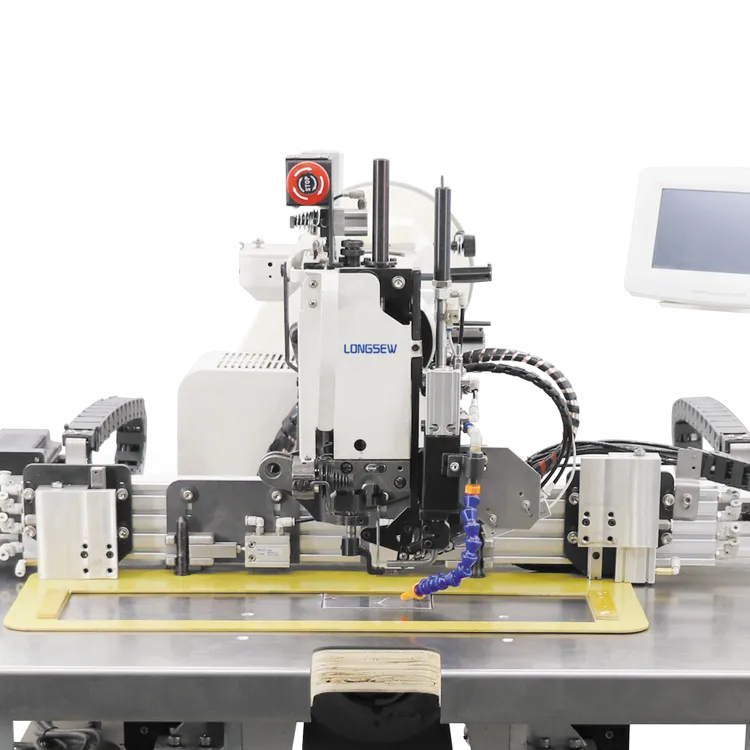what is a lock stitch on a sewing machine
Understanding Lock Stitch in Sewing Machines
Sewing machines have revolutionized the way we create clothing, crafts, and various textile products. Among the various types of stitches available, the lock stitch is one of the most widely used and foundational stitches in sewing. Understanding what a lock stitch is and how it operates will enhance your sewing skills and help you achieve professional-quality results in your projects.
What is a Lock Stitch?
A lock stitch is a type of stitch produced by sewing machines that interlocks two threads the upper thread and the bobbin thread. It is characterized by its strength and ability to hold fabric layers together seamlessly. When formed correctly, a lock stitch creates a neat and durable seam that is essential for most sewing applications.
How Does a Lock Stitch Work?
The lock stitch mechanism operates through a series of coordinated movements. The sewing machine uses a needle to carry the upper thread down into the fabric. As the needle descends, a hook mechanism catches the upper thread and wraps it around the bobbin thread, which is located in a separate compartment beneath the fabric. This interlocking action creates a secure stitch that holds the fabric layers together.
The process involves several steps 1. Needle Insertion The needle moves down through the fabric, pulling the upper thread along with it. 2. Hook Catching As the needle descends, the hook of the sewing machine rotates to catch the upper thread just before the needle reaches its lowest point. 3. Thread Interlocking The hook wraps the upper thread around the bobbin thread, forming a loop. 4. Needle Rise As the needle rises, it pulls the lock stitch tight, securing the two threads together and completing the stitch formation.
This cycle rapidly repeats, resulting in a consistent series of interlocked stitches along the seam
.what is a lock stitch on a sewing machine

Advantages of Lock Stitch
One of the primary advantages of the lock stitch is its versatility. It can be used for various fabrics, including lightweight materials like silk and heavier fabrics such as denim. Due to the strength of the interlocking threads, lock stitches are particularly effective for seams that endure tension or stress, making them ideal for garments and home textiles.
Additionally, the lock stitch lays flat on the fabric surface, producing a clean and polished appearance. This quality is particularly desirable for finished garments where aesthetics matter. Lock stitches can be adjusted in terms of length and tension to accommodate different fabric types and sewing requirements.
Common Uses
Lock stitches are widely used in apparel manufacturing, quilting, and general sewing. They are the standard stitch for constructing seams in shirts, pants, and dresses. Furthermore, many sewing machines feature multiple settings to create variations of the lock stitch, including straight stitching and zigzag stitching, further expanding its utility in garment construction and craft projects.
Conclusion
In summary, the lock stitch is a fundamental stitch type that plays a critical role in the world of sewing. Its ability to secure fabric layers together efficiently while providing a clean finish makes it a favorite among sewists, professionals, and hobbyists alike. Understanding its mechanics and applications not only empowers you with better sewing skills but also enhances the quality of your textile creations. Whether you are a seasoned seamstress or a beginner, mastering the lock stitch is an essential step in your sewing journey.
-
Industrial Cylinder Arm Sewing Machine: Revolutionizing Heavy-Duty SewingNewsJul.28,2025
-
Cylinder Arm Sewing Machine: Perfect for Special Sewing ApplicationsNewsJul.28,2025
-
Cylinder Bed Sewing Machine: Essential for Sewing Complex MaterialsNewsJul.28,2025
-
Heavy Duty Sewing Machine: The Essential Tool for Industrial ApplicationsNewsJul.28,2025
-
Computerized Pattern Sewing Machine: Revolutionizing Precision StitchingNewsJul.28,2025
-
Heavy Duty Industrial Sewing Machine: Power Meets PrecisionNewsJul.28,2025
-
Leather Sewing Machine: The Industrial Standard for Tough MaterialsNewsJul.18,2025





























